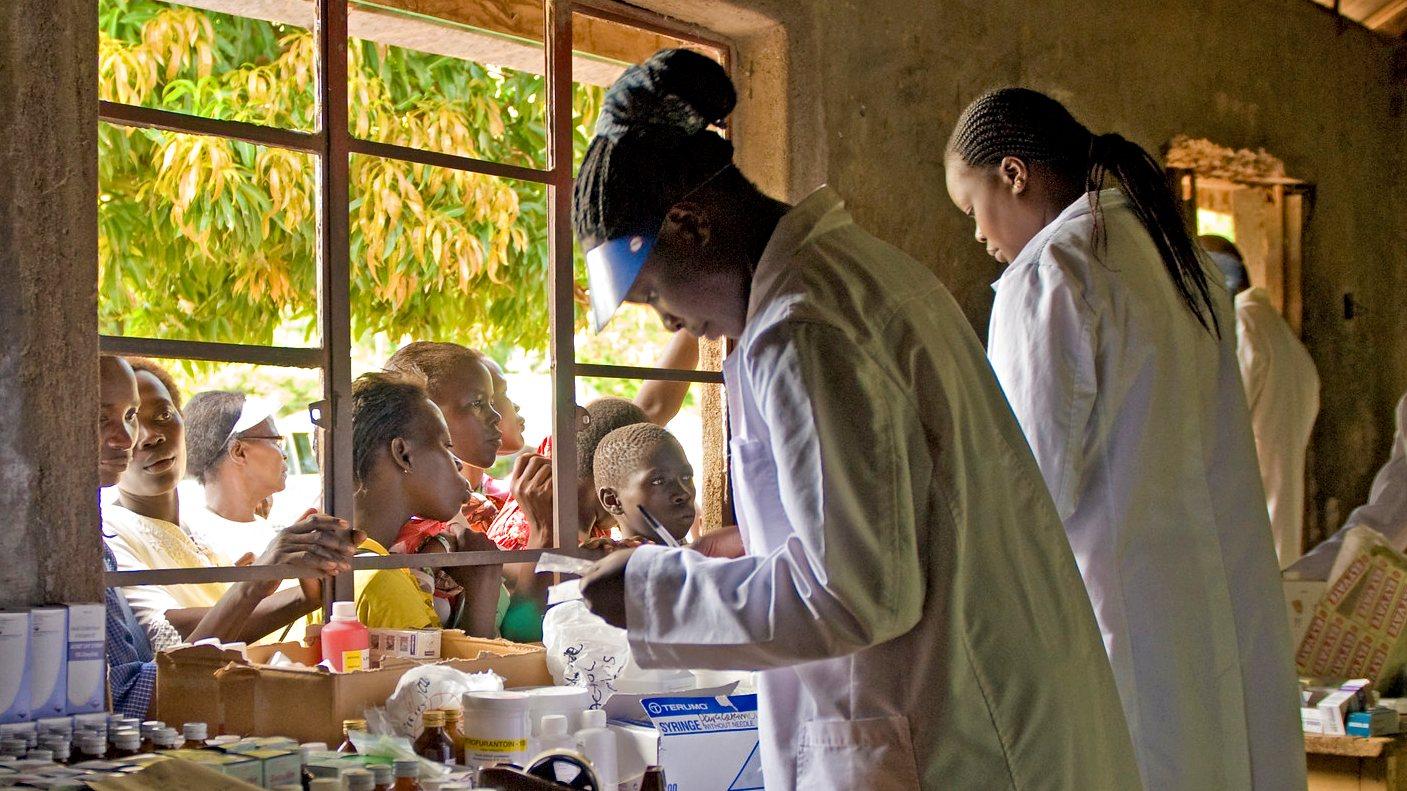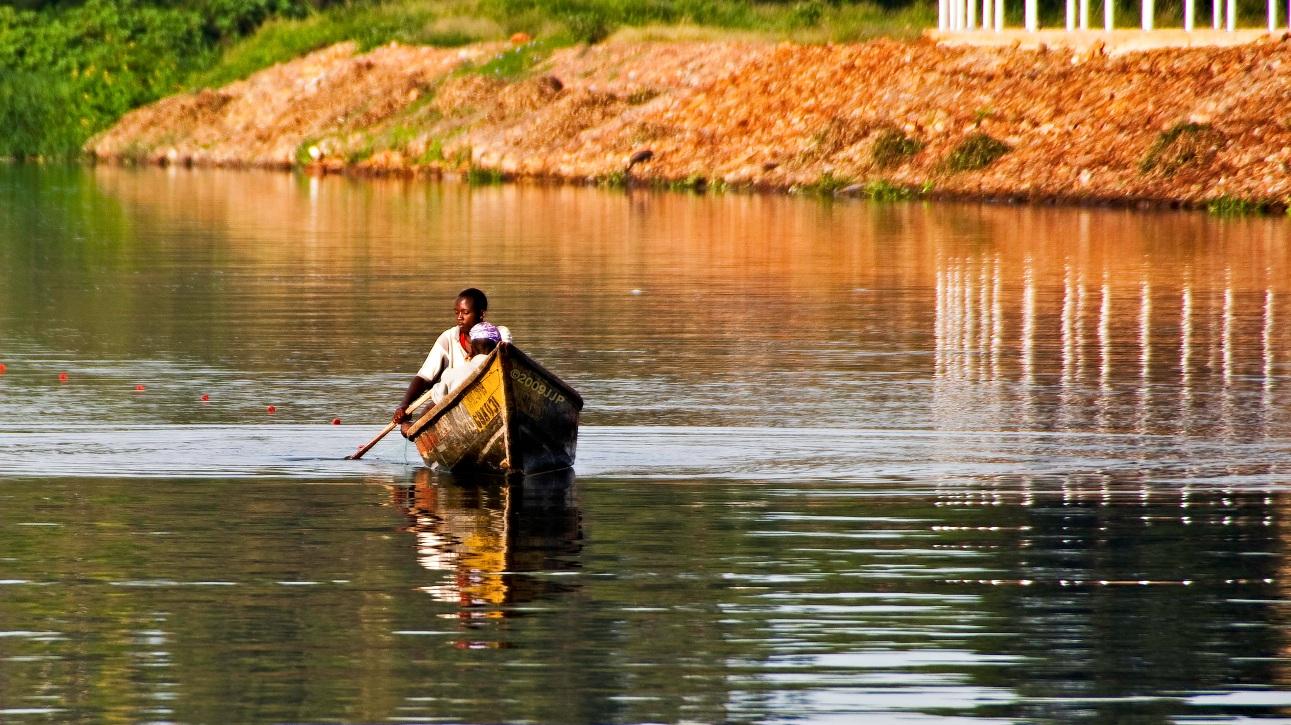In Kakamega County, in Kenya, the COVID-19 infection rate is low but fear among the local population of contracting the virus has had significant day to day impacts. The stigma attached to those suspected of being positive has caused serious mental harm, and healthcare practices have been disrupted. It is a reminder that data on infections and death rates is only one part of a complicated story.
This blog is part of the series Shifting Spaces, an emerging timeline of COVID-19 responses from Kenya, Malawi, Tanzania and Uganda resulting from the LEAD research project at the Firoz Lalji Centre for Africa.
‘They could have saved her life’, retorts Snyder’s mother. ‘But the doctors at the county’s referral facility fled. They ignored her because she was coughing too much, and her pregnancy was due’, she adds amidst sobs. Snyder is a recent victim of coronavirus-related stigma in Kenya, who was referred to Kakamega referral facility from St. Mary’s Mumias for an emergency caesarean procedure in June 2020, due to a lack of ICU facilities. In her new facility she was posthumously diagnosed of pulmonary embolism, the real cause of her death. At the time doctors said the symptoms resulted from COVID-19, despite tests for the virus later returning negative.
‘I pleaded with them to at least save my daughter’, Snyder’s mother recounts, describing how the medical practitioners refused to put her on oxygen support, to which she received the response: ‘We have to wait for the COVID-19 team to assess her symptoms’. This tragic loss is one among many – sometimes harrowing – experiences facing those suspected of carrying COVID-19 in Kakamega County. The story highlights the much broader community and health implications that extend beyond the boundaries of the virus itself.
COVID-19 from Kenya to Kakamega
By 17 July 2020, the number of confirmed COVID-19 cases in Kenya stands at 12,062, with a total of 222 deaths. The picture across the country, however, is uneven, with a considerable majority of reported cases located in the nation’s largest cities, like Nairobi and Mombasa. Indeed, the country’s urban hubs have been left desolate with routine cultures almost fading away.
At present, COVID-19 is the most dreaded disease in Kenya. Stigma for those suspected to have the virus has been reported across the news, which is attributed to the current low turn-out for mass testing in the country.
For instance, on 27 March the country woke up to saddening news of a South African national who committed suicide after being sidelined by her neighbours. This happened in Nakuru County – a region of south western Kenya – where the victim was mocked by the public on her way to buy food supplies from the nearby supermarket. The neighbours believed that she should have self-quarantined following her recent travel history from South Africa a few weeks before. The authorities subjected the 27-year old to mandatory quarantine where she was reported to have been mistreated with no one to counsel her.
Another woman, Caroline Wanjeri, reported to the Daily Nation how her close friends and family ostracised her after flying back into the country from the UK on 23 March 2020. After having gone through the mandatory two weeks quarantine, her close friend refused to pick her up from her hotel room. Her family members, on the other hand, had to have her isolated in their maize store for an additional period of two weeks for fear of contracting a disease for which she lacked a diagnosis.
Corona-inspired fear in Kakamega county
Compared to other regions of Kenya, Kakamega County has fared well with the epidemic, with only one confirmed case of COVID-19 since its advent (as of 2 June 2020). The county is in the western region of Kenya with the second largest rural population according to the 2019 census, where the main economic activity is farming. After the outbreak of the pandemic in the country’s major cities (Nairobi and Mombasa), the government’s swift response was focused on protecting vulnerable rural communities. This is explained by the curtailed movement of people from the affected cities into the rural counties. The effectiveness of the lockdown is evidenced by the fact that few infections and coronavirus-related deaths have been recorded among the rural populations. But this has not spared the county’s population from virus-related side effects – from the loss of jobs to the loss of life from stigma.
Forced isolation at considerable cost
Despite the limited number of cases in Kakamega, as elsewhere, fear of the virus remains. While children are seen playing in the neighbourhoods, the rest of the population walks past each other with suspicion and fear, wearing face masks, holding in sneezes or a cough in case they are forced into quarantine, described by the local television station as entailing hostile conditions, for which they would have to pay themselves.
Forced isolation has been reported throughout the county. For example, Chinese construction workers were quarantined at a hospital site in Kakamega for a mandatory 14 days due to their recent travel, rather than exhibiting symptoms. Similar discrimination against Chinese workers was reported at a road construction site in Tana River County. ‘The disease was brought by these Chinese. It’s likely that they will spread it to our people’, one of the angry residents was quoted in local media.
On 17 March 2020 medics and other patients from Kakamega County’s general hospital were sent into panic by a patient who had sought treatment from the hospital, a local who had recently travelled from Dubai. The sick man found himself alone and isolated by staff and patients in the very place where he had sought help. The patient later turned out to be negative of the virus.
Similar incidences were reported of a student who had travelled back to the country from China to his village in Manyulia Butere. His history of travel together with the common cold (as it later turned out) made the villagers avoid him. They reported him to the authorities as a threat to the village.
False positives and unreliable equipment
The total number of false positive cases recorded from within the county alone is suspected to be in excess of a hundred. Most of these cases were taken through quarantine and consequent testing before they were confirmed to be negative. This is understood to have emanated from the lack of testing facilities within the county and the reliance on affordable, and unreliable infrared thermometers. Given these inaccuracies, and that COVID-19 does not have a monopoly on feverish symptoms, malaria patients have likely been misdiagnosed in large numbers.
The same is true for other diseases that share symptoms with COVID-19, such as tuberculosis, pneumonia, bronchitis, common flu and pulmonary embolism. Patients with such diseases have found themselves held in quarantine facilities only for their results to come back negative. Consequently, many sufferers have shunned medical corridors for fear of victimisation. According to the weekly logs at Jamia clinic in Mumias-Kakamega County, June 2020 has seen an 87% reduction of patients with respiratory related complications.
At the same time, doctors at the Kakamega County’s referral hospital have their own concerns. Dr Mwagangi explained, ‘It’s tougher for us also. Because systems don’t seem to be working. We really want to help the patients. But we are cautioned to take precautions using the recommended PPEs that aren’t provided.’ Doctors have kept an asthma patient until the COVID-19 test results are returned, which can take at least 24 hours – too long for an emergency asthmatic case. Dr Mwagangi further adds;
‘We really want to help these patients. But we are susceptible to Corona too. And we have families looking up to us. And so we need to be sure we are not careless with what could be Corona. That’s why we treat every suspected case as a real one.’
The perspective of medical professionals in the county is that hospital systems are under strain: resources are being stretched and PPE is lacking. Overreliance on the county’s general hospital not only exerts pressure on the hospital facilities but also the medical personnel who are trying their best.
Home remedies in Kakamega county
A significant number of people have resorted to home remedies to avoid hospitals, especially if their symptoms reflect those for COVID-19. For instance, Anamanjia, a resident from Makunga village of Kakamega county asked why he would rather seek traditional herbs for the treatment of common cold symptoms, said:
‘They wouldn’t treat me anyway even if I took myself there. In fact, they would just conclude I have Corona. And they don’t have treatment for the same either. So I would rather I died trying my home remedies, than in the hands of the clueless medical team just like Snyder’s case’.
Anamanjia shows me a concoction made from a eucalyptus species together with some other native herbs. These options seem to be offering relief and hope to the affected, encouraged by local government authorities.
Impacts beyond healthcare numbers
Times have changed. Life normalities are shifting, and the traditional handshake is fading. Acquaintances can no longer hug each other comfortably and social joints have closed down. While Kakamega has experienced few known cases of COVID-19, the virus has impacted the delivery of healthcare more broadly and shaped people’s responses to their medical conditions. Indeed, set in the context of stretched medical resources and personnel, Kakamega has experienced its own version of the virus.
The accounts at Kakamega remind us that numbers do not reveal the full picture of COVID-19’s impacts – they merely reflect one aspect. Moving forward, it will be important to take account of the grounded realities of the virus, even in places where, at face value, the numbers may suggest a different story.
Photo: Equity Bank, licensed under creative commons (CC BY-NC-ND 2.0), cropped to 16-9.






Insightful and relatable piece, Alex!
Well done brother Alex…
I am not good at reading articles but i can easily relate to this one. Kudos Engineer!